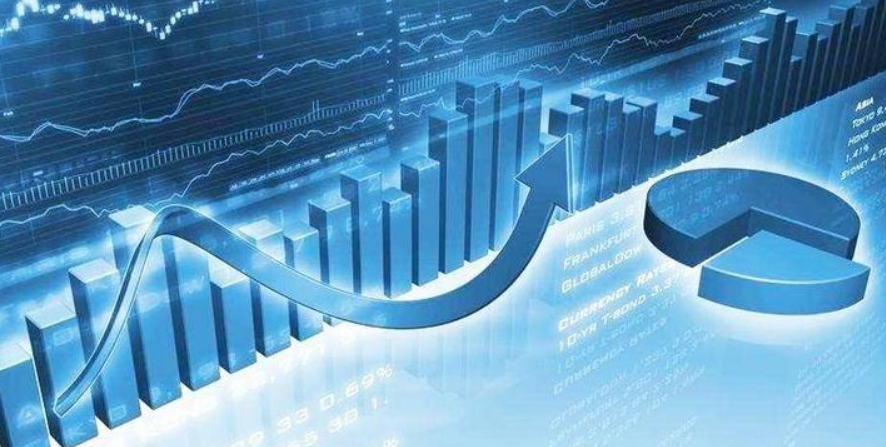Global Stagflation Fears Mount
Advertisements
In the midst of the complex economic cycles in both China and the United States,along with a backdrop of global “stagflation”,China is urged to maintain its growth momentum.The divergence in economic policies and cycles between major economies presents unique challenges and opportunities for China.
Resounding international concern arose when the European Central Bank (ECB) made the unprecedented move to raise interest rates on July 21.This 50 basis points hike not only exceeded market expectations of 25 basis points but also marked the ECB's first rate increase in over a decade,officially putting an end to the negative interest rate environment that had persisted for eight years.Such actions by the ECB reflect a broader trend among global central banks adjusting to soaring inflation rates.
As inflation continues to rise,central banks worldwide are intensifying their tightening measures.The U.S.Federal Reserve has already raised interest rates by 225 basis points throughout 2022,with the Bank of Canada unexpectedly increasing rates by 100 basis points on July 13.Similarly,the Bank of England has also raised its rates significantly this year.These activities highlight a collective urgency among central banks to counter inflation,which has brought new challenges to their traditional roles.
Recent statistics reveal alarming inflation rates.For instance,the U.S.Consumer Price Index (CPI) in June surged by 9.1% year-over-year,a level not seen in 40 years.Developed countries,on average,are experiencing inflation rates exceeding 6%,while emerging markets like Brazil and Russia are grappling with even steeper increases of over 11% and 17%,respectively.These titanic figures portend serious concerns about economic stability.
Despite the intensifying measures from central banks,market skepticism about their ability to navigate through the current turbulence is palpable.Inflation,akin to a runaway stallion,appears to be beyond the control of these institutions.Furthermore,economies that have grown accustomed to expansive monetary policies and low-interest rates are likely to succumb to the pressures of severe rate hikes,increasing the risk of a hard landing.
The International Monetary Fund (IMF) recently lowered its global economic growth forecasts for 2022 and 2023,indicating an estimated growth of only 3.2% and 2.9%,respectively.The projections for the U.S.and Eurozone were similarly adjusted downward,illustrating a chilling consensus on the struggle ahead for major economies.The term “stagflation” seems to be making a resurgence,reminiscent of the economic crisis of the 1970s.
The nature of stagflation is multifaceted,compelling us to examine its implications on China’s economy.Several avenues arise from the anticipated global slowdown,which could pressurize Chinese exports.Additionally,the increase in imported inflation could reverberate strongly,potentially intertwining with domestic factors,such as local pork prices,producing prolonged impacts on commodity markets and consumer prices.
As capital begins to exit emerging markets due to heightened risk aversion and the appreciating dollar,the renminbi may face depreciation pressure.The A-shares market could also feel the heat from foreign capital withdrawal,and the shifting dynamics in international politics may give rise to anti-globalization sentiments,complicating the global economic landscape even further.
Set against the backdrop of these economic headwinds,China must prioritize stabilizing its growth trajectory.The economic rollercoaster presented by the U.S.and European markets necessitates that China continues to reinforce its recovery efforts,thereby better navigating the unpredictable global environment. Notably,the independent market trends seen in A-shares since May hint at a potential continuation of this unique growth opportunity.
Notably,the independent market trends seen in A-shares since May hint at a potential continuation of this unique growth opportunity.
In evaluating the global economy's current stagflation context,one must acknowledge the spike in inflation as its chief catalyst.In the wake of the pandemic recovery efforts,inflation began to rear its head late in 2021.For instance,the U.S.CPI jumped by 4.2% in April 2021,yet it was dismissed as a temporary blip by financial authorities.A divergence in economic recovery patterns across nations,spurred by varying pandemic policies and stimulus levels,has complicated the inflation outlook globally.
Historically,developed economies had largely remained insulated from inflation's grip,cultivating an illusion of low inflationary environments.Nevertheless,as inflation rates soared well beyond anticipated levels while central banks debated the transitory nature of these increases,the market began to react with caution.By mid-2022,the U.S.inflation rate surpassed an alarming 9.1%.European inflation mirrored this troubling trend,with the eurozone witnessing rates of approximately 8.6%.
Against this backdrop,the ECB's delayed interest rate hike took many by surprise.Historically,the ECB has had fewer qualms about inflation compared to its global counterparts,steeped in the traditions of rigorous monetary policy.However,despite a long-standing commitment to combating inflation,the ECB’s actions felt almost reactive rather than proactive,highlighting an underlying hesitancy to normalize rates too swiftly.
The decision to raise rates may have far-reaching consequences for Europe's economic recovery,heightening recession risks across the continent.Emerging after long periods of economic malaise,countries in the eurozone remain vulnerable.The stresses of a fresh debt crisis loom as high inflation compounds existing fragilities insufficiently addressed during prior crises.Market confidence in the euro's stability falters amid these turbulent times.
As investors grapple with uncertainty,stock markets are reflecting fears of a broader economic downturn.The S&P 500 index plunged by 17% in 2022,entering a bearish phase.Similarly,European indices also faced notable declines,with Germany's DAX and France's CAC dropping by significant margins.Export-dependent nations experienced even sharper downturns within their respective equities.
Despite these pressures,commodities face fluctuating market trends,recently falling from their peaks.Oil briefly plummeted to about $93 from a high of $122 per barrel,while copper prices,known for their sensitivity to economic health,witnessed declines of approximately 35% from March highs.Amid these changes,global inflation remains stubbornly elevated,suggesting that the mere decline in commodity prices won’t rectify systemic inflationary pressures.
The ripple effects of stagflation across global markets underline the necessity for China to navigate carefully through these turbulent waters.With America poised for economic contraction and Europe facing similar vulnerabilities,China must leverage its unique position to stabilize and support its economy,rejuvenate growth,and resolve market discrepancies.
Finally,as policymakers round out their approaches to manage these challenges,the prospect of enhanced trade relations between China and the U.S.could emerge as a pivotal strategy moving forward.Economic dialogues that lead to tariff reductions could significantly alleviate inflationary pressures in the U.S.Providing a basis for economic cooperation,such an outcome could herald a shift towards a more synchronized global economic recovery.
Leave a Comment